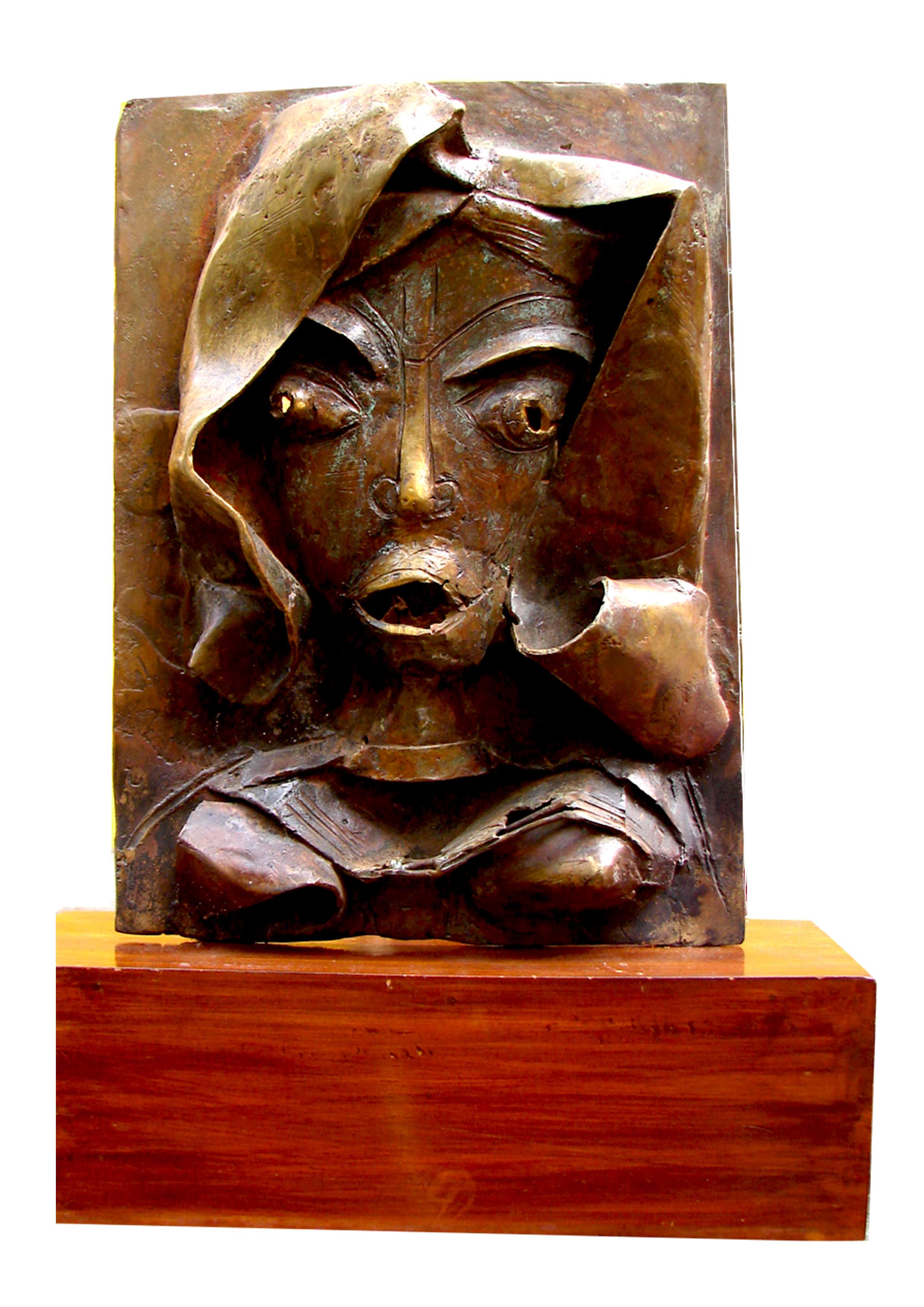


The artistic journey of artist sculptor Sudip Chandra ignited from his early impressions of life in the suburban district of Chinsurah, a Portuguese colony in West Bengal. Remnants of colonial sights and imagery, coupled with the slow paced life of a semi urban setting impacted his psyche and left a strong influence in his works especially in the treatment of his subjects and the colour tones that he naturally took inclination to.
Religious rites and rituals , graphic scenes of dead bodies in lighted pyres of burning ghats and the interplay between darkness and the soft illumination of bulbs in routine life found strong reflections in Sudip’s artistic expressions and came to stay in future years as he set the trail of his artistic works. Nature, figures and forms of animal, human faces, man woman relationships, figures of deities manifested in his paintings and his sculptures in regular rhythm and pattern. "My choice of medium in paintings has been dry pastels, mostly tempera on board and my sculptures have been done in bronze and terracotta, that are my preferred choice. Though life for me in the suburbs has had its share of brightness, hope and joys but my repeated use of the sombre, darker shades of blues, greys, blacks possibly emanate from a deep-rooted sense of foreboding, fear or darkness that envelopes life in general. Till date I am still mystified by my own use of tones and hues, and I am reminded of those sights and scenes my eyes witnessed and continue to do so”, states Sudip.
The artist completed his Bachelors in Visual Arts from the Indian College of Art Draftsman ship, Kolkata, and subsequently went on to do his Masters in Visual Arts from the Government College of Art and Craft Kolkata where he picked up oil-based technique and continues to employ it in his present works. He has frequently participated in numerous workshops and shows in Kolkata, Mumbai, Pune and Delhi. The artist has been awarded by several institutions and bodies and he continues to practice his craft with his nascent semi urban sensibilities which are often speckled with the essence of folk art and fables surrounding religious sentiment and slow paced life of his hometown.